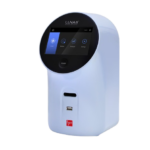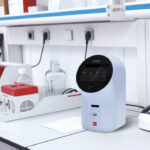DNA and protein gels have a long as storied history as being easy to run, but difficult to obtain good data from. Much of the problem has lied in the acquisition of images and subsequent extraction and analysis of data. Luckily or today’s scientists, there’s many good options out there for gel documentation systems which can meet just about any gel documentation requirement. So what’s important to consider when choosing a gel documentation system?
Consideration #1: Your Lab’s Needs
The first question to ask is “what does my lab need” – what are the most basic requirements that we have for a gel documentation system? Are you just going to be running protein gels with ethidium bromide? Will you be imaging gels using fluorescence, or chemiluminescence? Will you require multi-channel imaging capabilities? How large of gels will you need to be able to document? Get the basic requirements set in stone before you think about making a purchase, and consider things that you may realistically need to do in the future.
Consideration #2: Lighting
Lighting usually gets addressed when labs are considering their basic requirements, as there’s generally no way around it. If you’re doing chemiluminescence westerns, you need a gel doc with chemiluminescence. If you’ll be staining protein gels with Coomassie blue, you’ll need light transillumination. You get the idea.
Consideration #3: Price
As most labs have a budget to conform to, one of the first things that usually gets discussed is price. A basic UV-vis gel documentation system with a good feature set can generally be purchased for under $10,000. Add features like high-resolution cameras, top-end analysis software, multi-channel imaging, chemiluminescence or fluorescence, and you may need to budget more than that (depending on the particular feature set you want, of course).
Consideration #4: Camera & Resolution
Most gel doc systems have cameras with resolutions between 0.5 and 8 megapixels, with anything under 2MP generally considered “entry level”. As higher resolution and deeply cooled (cooled CCD cameras) systems can significantly increase the cost, it’s probably best to discuss your needs and applications with your sales rep so you can determine a good resolution than assume that you need a high-resolution model. Likewise, assuming that an entry level camera will be “good enough” can be disastrous, so unless you’re certain of your needs, discuss your applications with your sales specialist.
Consideration #5: Software
Do you want your gel documentation system to simply acquire images, or do you want analysis? If you want analysis, how much analysis do you want your gel doc system to be able to perform? Are you going to want the software to run on the device itself or on a computer? Will each lab member need their own copy of the analysis software? Important questions to ask include how many software licenses come with the gel-doc (and / or how expensive additional licenses are), how often the software is updated, and how long you get free updates for.
Consideration #6: Automation
Some gel docs are very easy to use, others not so much. The difference most often comes down to automation. How many settings need to be adjusted each time an image is taken? Fully automated systems will be more expensive, of course, but they’ll increase your efficiency and throughput and also require less training.
Of course there are other considerations when purchasing a gel doc as well, such as access to the data, quality and format of the output, physical size, warranty, and a system’s ability to be upgraded. Hopefully with this in mind, you’ll be able to find a gel documentation system that fits both your current and future needs as well as your budget.
And if you ever need some help, just ask us!



